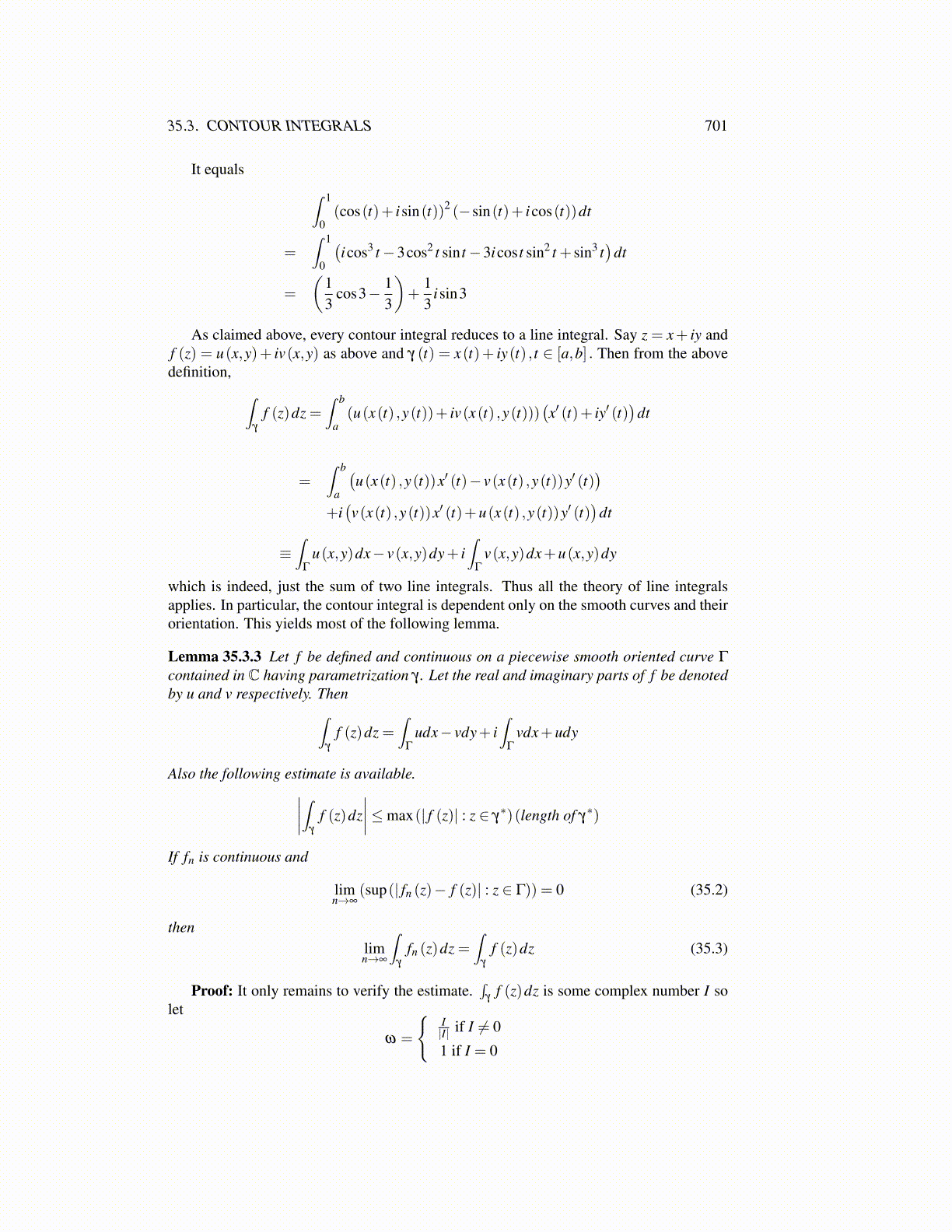
35.3. CONTOUR INTEGRALS 701
It equals ∫ 1
0(cos(t)+ isin(t))2 (−sin(t)+ icos(t))dt
=∫ 1
0
(icos3 t−3cos2 t sin t−3icos t sin2 t + sin3 t
)dt
=
(13
cos3− 13
)+
13
isin3
As claimed above, every contour integral reduces to a line integral. Say z = x+ iy andf (z) = u(x,y)+ iv(x,y) as above and γ (t) = x(t)+ iy(t) , t ∈ [a,b] . Then from the abovedefinition, ∫
γ
f (z)dz =∫ b
a(u(x(t) ,y(t))+ iv(x(t) ,y(t)))
(x′ (t)+ iy′ (t)
)dt
=∫ b
a
(u(x(t) ,y(t))x′ (t)− v(x(t) ,y(t))y′ (t)
)+i(v(x(t) ,y(t))x′ (t)+u(x(t) ,y(t))y′ (t)
)dt
≡∫
Γ
u(x,y)dx− v(x,y)dy+ i∫
Γ
v(x,y)dx+u(x,y)dy
which is indeed, just the sum of two line integrals. Thus all the theory of line integralsapplies. In particular, the contour integral is dependent only on the smooth curves and theirorientation. This yields most of the following lemma.
Lemma 35.3.3 Let f be defined and continuous on a piecewise smooth oriented curve Γ
contained in C having parametrization γ . Let the real and imaginary parts of f be denotedby u and v respectively. Then∫
γ
f (z)dz =∫
Γ
udx− vdy+ i∫
Γ
vdx+udy
Also the following estimate is available.∣∣∣∣∫γ
f (z)dz∣∣∣∣≤max(| f (z)| : z ∈ γ
∗)(length of γ∗)
If fn is continuous and
limn→∞
(sup(| fn (z)− f (z)| : z ∈ Γ)) = 0 (35.2)
thenlimn→∞
∫γ
fn (z)dz =∫
γ
f (z)dz (35.3)
Proof: It only remains to verify the estimate.∫
γf (z)dz is some complex number I so
let
ω =
{I|I| if I ̸= 0
1 if I = 0